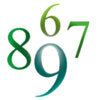Skip over navigation
Isabelle and Adam from Sacred Heart Catholic College both used averages to compare the ages of Presidents. Here is Isabelle's working for the age at death:
In the past (1789-1889) the average age of death was 70.3. I worked this out by adding up the total ages of death, and then dividing by the number of Presidents (23).
The average age of death in recent years (1897-2009) was 71.3. I used the same method to work this out.
In conclusion we have found that between past past and present years there is only really an age difference of 1 year.
Adam used a different time periods to represent recent Presidents and those from a long time ago:
Presidents who lived recently (1901-2009) live longer than ones longer ago (1789-1897). The average age of someone who died recently is 72.29 years old but the average age of someone who lived a long time ago is 69.79 years old.
Ewan and Aidan wanted to see if the year of inauguration affected the age at death. They drew a scatter graph, and concluded that there was no correlation. You can see their results here .
Adam also looked at the ages of Presidents when they were inaugurated:
Presidents who lived recently (1901-2009) had a higher age when they were inaugurated than a long time ago (1789-1897). The average of recent Presidents is 54.16 years old but longer ago it was 52.96 years old.
Hazel from Kings Norton Girls' School had similar results, and she gave this explanation for them:
These answers make sense as people who lived a long time ago had a shorter life span than we do now. This shows why the presidents were elected at a younger age than recent ones as they would have been seen as the wisest when the USA was a young nation, but now people in their 60's can be very fit. Between these first presidents and recent presidents, generally presidents were in their late 40's or early 50's.
Students from Centennial Elementary School in the USA looked at a number of different other questions about this data. Their most interesting finding was that Presidents between 1865 and 1895 were most likely to die from a heart attack. Being President must have been a stressful job!
Matthew, from Priestlands School, considered whether recent presidents live longer after inauguration than presidents from longer ago. You can see his solution here. Jake also considered a similar question; you can see his solution here.
Well done and thank you to everyone who contributed their solutions.

Or search by topic
Number and algebra
Geometry and measure
Probability and statistics
Working mathematically
Advanced mathematics
For younger learners
The Lives of Presidents
Age 11 to 16
Challenge Level 





- Problem
- Student Solutions
Isabelle and Adam from Sacred Heart Catholic College both used averages to compare the ages of Presidents. Here is Isabelle's working for the age at death:
In the past (1789-1889) the average age of death was 70.3. I worked this out by adding up the total ages of death, and then dividing by the number of Presidents (23).
The average age of death in recent years (1897-2009) was 71.3. I used the same method to work this out.
In conclusion we have found that between past past and present years there is only really an age difference of 1 year.
Adam used a different time periods to represent recent Presidents and those from a long time ago:
Presidents who lived recently (1901-2009) live longer than ones longer ago (1789-1897). The average age of someone who died recently is 72.29 years old but the average age of someone who lived a long time ago is 69.79 years old.
Ewan and Aidan wanted to see if the year of inauguration affected the age at death. They drew a scatter graph, and concluded that there was no correlation. You can see their results here .
Adam also looked at the ages of Presidents when they were inaugurated:
Presidents who lived recently (1901-2009) had a higher age when they were inaugurated than a long time ago (1789-1897). The average of recent Presidents is 54.16 years old but longer ago it was 52.96 years old.
Hazel from Kings Norton Girls' School had similar results, and she gave this explanation for them:
These answers make sense as people who lived a long time ago had a shorter life span than we do now. This shows why the presidents were elected at a younger age than recent ones as they would have been seen as the wisest when the USA was a young nation, but now people in their 60's can be very fit. Between these first presidents and recent presidents, generally presidents were in their late 40's or early 50's.
Students from Centennial Elementary School in the USA looked at a number of different other questions about this data. Their most interesting finding was that Presidents between 1865 and 1895 were most likely to die from a heart attack. Being President must have been a stressful job!
Matthew, from Priestlands School, considered whether recent presidents live longer after inauguration than presidents from longer ago. You can see his solution here. Jake also considered a similar question; you can see his solution here.
Well done and thank you to everyone who contributed their solutions.
You may also like
Consecutive Numbers
An investigation involving adding and subtracting sets of consecutive numbers. Lots to find out, lots to explore.

